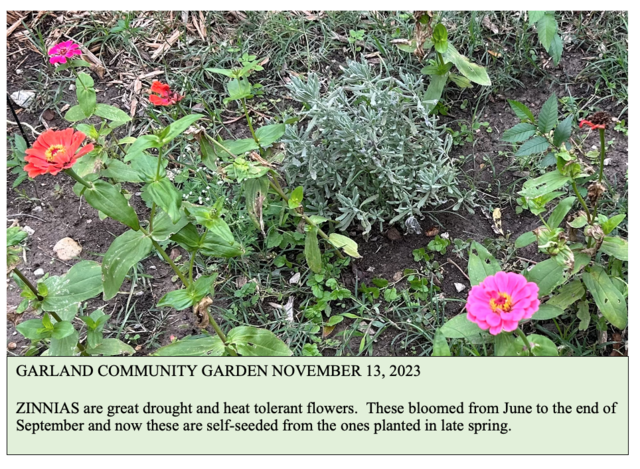
MUSTARD GREEN HARVEST GARLAND COMMUNITY GARDEN!
10 AM to NOON
Saturday November 18, 2023
I will be at the Garland Community Garden for two hours on Saturday to guide those who want to harvest Mustard Greens. Normally we ask people to not harvest from the garden. However as long as I'm down there, I can direct you to the beds that can be harvested. Otherwise, out of respect to the other gardeners, we ask you to not harvest unless a member of Loving Garland Green is down there to direct you to the beds where we might make exceptions on occasions such as this.
You will need to bring:
1. Scissors
2. a bag for your greens.
Also, I will supervise folks who want to make cuttings of a few herbs such as oregano. You can put these is water and they will root and grow in a sunny spot on a window sill in your kitchen.
In late September I threw some mustard and collard green seeds around the garden. I didn't expect the great result that resulted. Many of these greens will be gone with the first heavy frost we have. Of course the Kale and Collards are more hardy. Our first killing frost is usually around the 21st of November. I would hate to see all these lovely greens go to waste.
If you've never eaten greens, now might be a good time to try some.
HOW DO YOU COOK THEM?
Mustard Greens
PREP TIME. 10 mins
COOK TIME. 15 mins
TOTAL TIME. 25 mins
SERVINGS 4 servings
Ingredients
1/2 cup thinly sliced onions
1 tablespoon extra-virgin olive oil
2 cloves garlic, minced I don’t like garlic
1 pound mustard greens, washed, large stems removed, leaves torn into large pieces
2 to 3 tablespoons chicken broth, or vegetable broth
1/4 teaspoon dark sesame oil
1/4 teaspoon salt
1/4 teaspoon pepper
Sautee onions in olive oil
Add mustard greens and broth. Cook until barely wilted. Remove from heat. Toss with sesame oil Season salt and pepper. Calorie per serving 79. 4g fat, 9g carb. 4g protein
____________________________________________________________

Greens make a great side dish.
This is a classic Sicilian side dish using greens. Of course, I skip the garlic because I don’t like garlic.
It's made with leafy greens that you sauté with garlic in olive oil and toss with toasted pine nuts and raisins. The result is sweet, savory, salty, spicy and just a little bitter.
I often use dinosaur kale (aka Lacinato or Tuscan kale) but you could easily use collard greens, mustard or turnip greens, or spinach. Any leafy green will do. It takes less than 10 minutes to cook.
Ingredients
- 1/4 cup pine nuts
- 2 tablespoons extra virgin olive oil
- 2 cloves garlic, minced
- 1/4 cup golden raisins
- 1 bunch kale, chard, collards, or turnip greens, etc., about 1 pound, tough stem centers removed (if any) and discarded, greens chopped
- 1/2 to 1 teaspoon red pepper flakes
- Roughly 1/4 cup dry white wine (can sub water with a splash of balsamic vinegar or lemon juice)
- Kosher salt and freshly ground black pepper, to taste
Toast Pine Nuts in skillet. Add Olive oil. Wilt the greens. Add the greens and mix well. Sauté, stirring often, until the greens wilt and begin to give up some of their water, anywhere from 1 to 2 minutes for spinach to 4 to 5 minutes for collards or kale. Add the nuts, raisins, salt, and red pepper flakes:
Stir in the nuts and raisins, and sprinkle with salt and red pepper flakes
Add the white wine:
Use a little more wine if you are cooking collards, and less if you are cooking spinach. Toss to combine and let the liquid boil away. Once the liquid boils off, remove from heat. Add salt and pepper to taste.
You can also see some of our lovely self-seeded Zinnias scattered throughout the garden. I'll also have a few of their seeds to give away.
